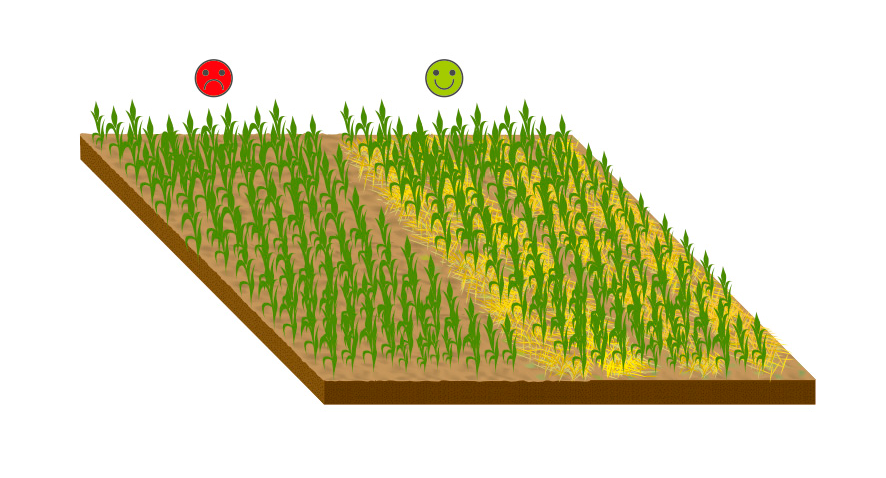When covered, soils are better protected from the physical impact of water, wind and direct insolation (exposure to the sun). Soils can be covered with previous-crop residues or cover crops, which also increase biomass. This farming practice is one of the best ways to turn agricultural land into a carbon sink.
- Management target
- Sustainability Indicators
DIRECT:
1.- Enhancement of Agro-biodiversity (enhance habitats for birds; enhance soil fauna; increase fauna over the soil and edaphic fauna; enhance landscape diversity; provide ecosystem services such as pollination of crops, opportunities for recreation, …)
2.- Positive impact on soil structure
3.- Reduction of runoff and erosion
4.- Improvement of water infiltration (micro- and macroporosity)
5.- Avoidance of soil compaction
6.- Enhancement of biomass production
INDIRECT:
7.- Improvement of water quality
8.- Increase of soil organic matter
9.- Enhancement of soil fertility (soil productivity)
10.- Avoidance of contamination (local and diffuse)
11.- Impact on the nitrogen cycle (mineral nitrogen is trapped and returned to the following crop; pulses contribute to improving organic matter level in soil)
12.- Reduction of GHG levels
1.- EBITDA
Permanent soil cover implementation will have a clear influence on the economy of the farm.
2.- EBITDA/labour unit
Permanent soil cover implementation will have a clear influence on the economy of the farm.
3.- Production costs
Permanent soil cover implementation will have a clear influence on the economy of the farm.
6.- Feed self-sufficiency
Crop residue management will vary when implementing this BMP. (i.e. stubble will not be available for animals).
7.- Effectiveness working time
A different soil management could imply different needs of working times.
8.- SI – Satisfaction Index
The implementation of this BMP could have a positive influence on the farmer’s perception.
10.- Annual soil cover rate
Permanent soil cover use will increase the number of days on which the soil is covered.
11.- Organic matter level
Permanent soil cover use will increase organic matter level due to the soil Carbon sequestration.
12.- Crop biodiversity/rotation
This indicator is directly linked to the surface of cover crops.
13.- NPK balance
The needs and extractions of NPK will change when implementing this BMP (i.e. At the beginning of the implementation of No-Till, it can be necessary to increase nitrogen application, because of the higher biological activity).
14.- Energy balance
The energy consumed and produced on the farm will change when implementing this BMP.
16.- Water consumption
The water consumed by the farm will change when implementing this BMP, due to the improvement of the soil structure (higher capacity to retain water), because of the decreased soil disturbance.
21.- Biodiversity structures (nests, hives, spider webs, etc.) – habitats
Soil cover, instead of being ploughed, is a refuge for arthropods.
22.- NO3 level – boreholes and wells
Green cover crops will extract Nitrogen and reduce the possible contamination of boreholes and wells.
23.- NO3 level – rivers
Permanent soil cover use will reduce run-off water and, therefore, the NO3 contamination in water streams will be reduced.
25.- GHG level
Soil cover (green or residue) will act as a sink for CO2.

